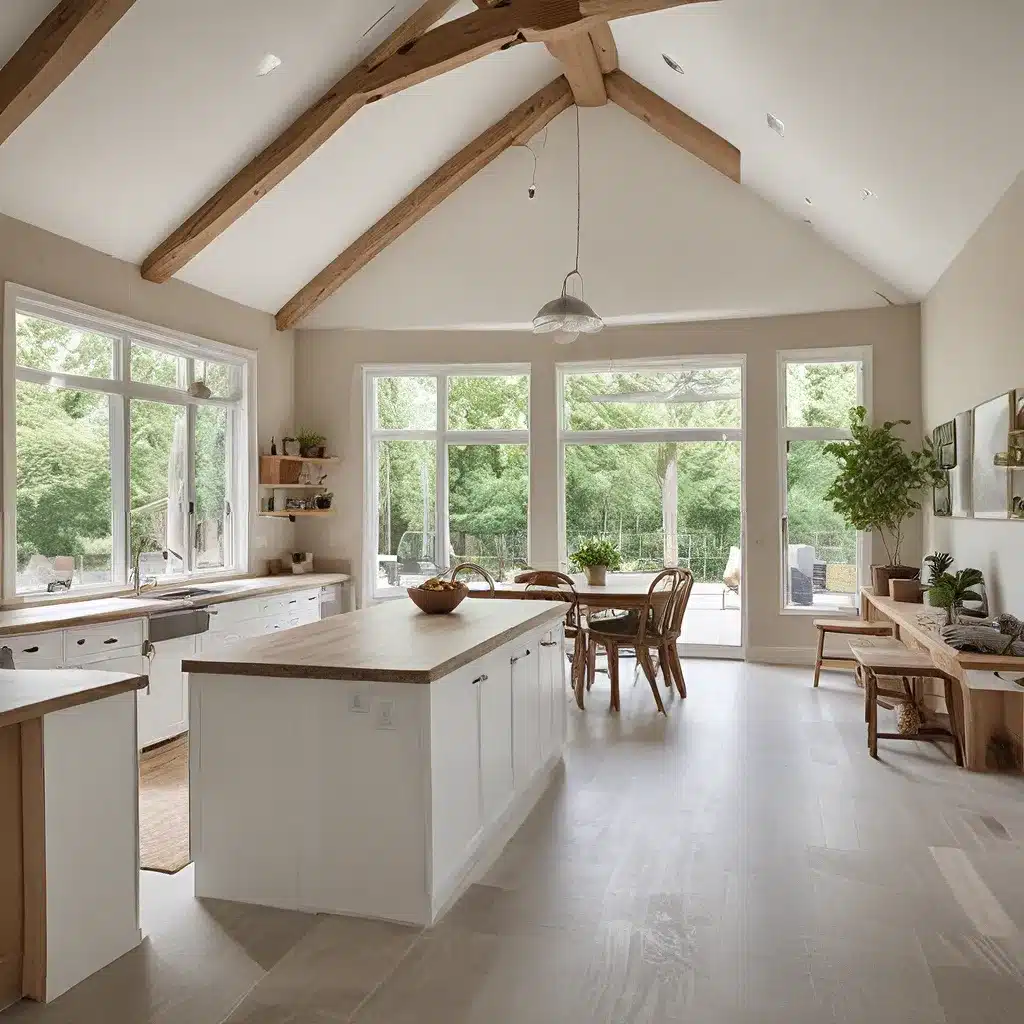
As a homeowner in Aberdeen, UK, I’ve always been passionate about creating a space that not only looks great but also aligns with my values around sustainability and environmental responsibility. When it came time to tackle a whole-home renovation, I knew I needed to approach the project with a keen eye on the long-term impact.
Navigating the Maze of Green Building Standards and Certifications
The world of sustainable design can feel overwhelming, with a proliferation of green building standards, rating systems, and product certifications to navigate. From BREEAM and LEED to Green Globes and the Living Building Challenge, it’s enough to make your head spin. But fear not, my fellow eco-conscious homeowners – I’ve done the legwork to help make sense of it all.
One of the key things I’ve learned is that these standards and certifications serve as a valuable framework for guiding design decisions and ensuring a holistic approach to sustainability. They don’t just focus on energy efficiency or water conservation; they also consider factors like indoor air quality, material selection, site impact, and social equity. By aligning my renovation with a recognized certification system, I could be confident that I was addressing the full scope of environmental considerations.
Evaluating Product Certifications: Separating Fact from Greenwashing
Of course, product selection is a critical piece of the sustainable renovation puzzle. With so many green product certifications out there, it can be challenging to discern which ones truly hold water. I’ve found that third-party certifications like ENERGY STAR, WaterSense, and Cradle to Cradle carry the most weight, as they involve rigorous, independent testing and verification.
On the flip side, I’ve also encountered my fair share of greenwashing – where companies make unsubstantiated claims about a product’s environmental benefits. That’s why I always dig into the details of a certification’s requirements and prioritize full transparency from manufacturers. Health Product Declarations (HPDs) and Environmental Product Declarations (EPDs) have become invaluable tools in my quest for honest, data-driven information.
Balancing Efficiency, Comfort, and Aesthetics
One of the biggest misconceptions I had going into this renovation was that sustainable design had to mean sacrificing style or comfort. But as I’ve delved deeper into the world of high-performance building, I’ve learned that innovative technologies and smart design strategies can actually enhance the living experience while reducing environmental impact.
For example, geothermal heat pumps and solar photovoltaic systems have allowed me to create a comfortable, energy-efficient home without relying on fossil fuels. And by incorporating passive design principles like strategic window placement, daylighting, and natural ventilation, I’ve been able to regulate indoor temperatures and reduce the need for mechanical heating and cooling.
Of course, aesthetics haven’t been an afterthought. Sustainable materials like recycled-content tiles, Forest Stewardship Council (FSC)-certified wood, and low-VOC paints have allowed me to create a space that is both beautiful and environmentally responsible. And by working closely with my design team, I’ve been able to seamlessly integrate these high-performance elements into a cohesive, visually stunning renovation.
Embracing the Evolving Landscape of Sustainable Design
One of the things I’ve come to appreciate most about this renovation journey is the sense of innovation and forward-thinking that permeates the sustainable design community. As building codes and standards continue to raise the bar, manufacturers and designers are constantly pushing the boundaries of what’s possible.
From net-zero energy and all-electric homes to biophilic design and regenerative building practices, the future of sustainable renovation is an exciting and rapidly advancing field. And while I may not have all the answers today, I’m grateful to be part of a community that is continuously exploring new frontiers and sharing knowledge.
As I put the finishing touches on my own whole-home renovation, I can’t help but feel a sense of pride and excitement for the positive impact it will have – not just on my family’s quality of life, but on the environment as a whole. By making sustainability a top priority, I know I’m investing in a more resilient, future-proof home that will serve us well for years to come.
So if you’re embarking on your own renovation journey, I encourage you to lean into the wealth of resources and expert guidance available. Embrace the challenge of navigating the complexities of sustainable design – the payoff, both for your home and the planet, will be well worth it. Let’s work together to build a better, more sustainable future. I can’t wait to see what we can achieve.
















